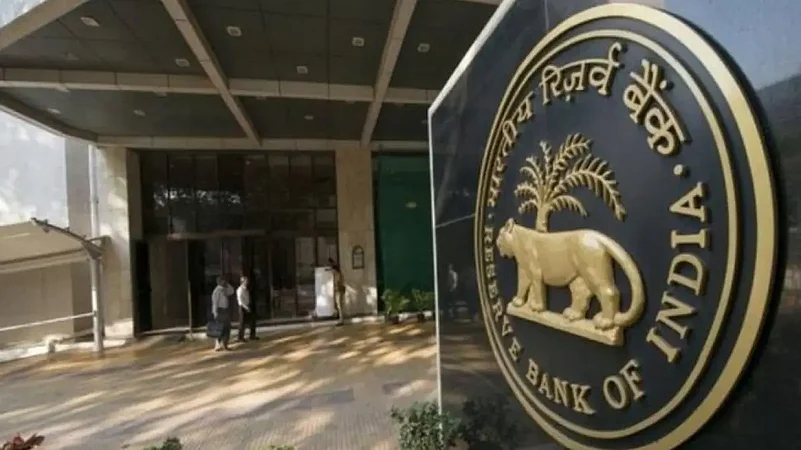The impact of the US Federal Reserve's announcement in November last year to taper its asset purchases was "moderate" on Indian financial markets largely due to the country's strong external position in 2021, says an article.
The article published in the Reserve Bank of India's (RBI) monthly bulletin for July compared the impact of the two taper announcements (May 22, 2013, and November 3, 2021) by the US Federal Reserve (Fed) on Indian financial markets.
The article - Fed Taper and Indian Financial Markets: This Time is Different - is prepared by Vidya Kamate and Saurabh Ghosh from the Strategic Research Unit, Department of Economic and Policy Research, RBI.
Advertisement
The central bank said the views expressed in the article were those of the authors and do not necessarily represent the views of the RBI.
The authors said in terms of changes in government bond yields, yield curve, and exchange rate, the impact of the Taper 2 announcement (November 3, 2021) was found to be rather muted.
In comparison to the Taper 1 announcement (May 22, 2013), movements in Indian equities, bonds, and currency market volatility were also observed to be rather muted in the Taper 2 announcement period.
"The Indian financial markets' mild response to the Taper 2 announcement can be linked to the country's strong external sector position during the Taper 2 announcement period," the article said.
Advertisement
In response to the Global Financial Crisis, the Fed's large-scale asset acquisition programme was launched in November 2008.
On May 22, 2013, Fed Chairman Ben Bernanke first hinted that the Fed could taper Quantitative Easing (QE), also known as Taper 1, which caused a bond market meltdown that raised the 10-year yield by nearly a percentage point.
In the wake of the dysfunction of the treasury and mortgage-backed securities (MBS) markets after the outbreak of COVID-19, the Fed announced on March 15, 2020 that it would buy at least USD 500 billion in treasury securities and USD 200 billion in MBS.
On November 3, 2021, the Fed announced a taper in asset purchases to the tune of USD 10 billion in treasuries and USD 5 billion in MBS per month (Taper 2).
In December 2021, the Fed announced a doubling of its tapering speed and said the asset purchases would end in March 2022.
Explaining the differential financial market response during the two taper announcements, the authors said that the Taper 1 announcement caught the financial markets across the world by surprise, and hence, led to a significant adverse reaction.
The Taper 2 announcement, on the other hand, was somewhat anticipated by the financial markets given the past experience with Taper 1 and Fed communication subtly hinting at chances of taper in the periods leading up to the Taper 2 announcement, they said.
Advertisement
Another potential explanation for the resilience in the Indian markets post-Taper 2, could be the backing of stronger economic fundamentals in India as opposed to the period before the Taper 1 announcement, the article said.
"A lower current account deficit as a percentage of GDP, larger foreign exchange reserves and stronger economic growth in Taper 2 vis-à-vis Taper 1 period imply that the Indian economy is in a much better shape to withstand Fed tightening and manage any associated change in volatility in financial markets," it said.
The article said the inflation dynamics in India were also vastly different in Taper 1 as against the Taper 2 announcement period.
Advertisement
In contrast to the multiple indicator approach in 2013, monetary policy in India currently operates under an inflation targeting regime with a well-defined inflation target that anchors inflation expectations, it said.
Meanwhile, another article - Electronification of FX Markets in India – published in the bulletin said the electronification of global foreign exchange (FX) trading with the emergence of multi-bank platforms has transformed the execution of trade and price discovery.
Some of these changes can be seen even in the onshore Indian Rupee market, albeit in a limited way.
The article is prepared by Abhishek Kumar and Nitin Daukia of the Financial Markets Regulation Department (FMRD), RBI. The central bank said views expressed in this article were those of the authors and do not necessarily represent the views of the RBI.
Advertisement
Electronification of global FX trading, in recent times, has been characterised by the emergence of new forms of trading venues, such as single-bank platforms (SBPs) and market-makers, including principal trading firms (PTFs), it said.
These developments have altered the market structure with growing market fragmentation such as dispersion of FX trading across a wide range of trading venues, and internalisation like dealers increasingly offsetting client trades with each other instead of covering the risk in the interdealer market.
In recent years, SBPs are also becoming increasingly visible in the Indian FX market with trading volumes rising on such platforms, it said.
Advertisement
They said the structural shifts in the FX markets have implications for policymaking, especially with regard to transparency and pricing for clients, as well as central bank oversight of FX markets.
The article further said electronification has fundamentally altered the way prices are discovered and liquidity is provisioned to users in financial markets.
"Market monitoring must commensurately and continuously evolve to effectively keep track of the structural shifts on account of these trends," it said.
At the same time, the possibilities emerging out of electronification must be leveraged to increase market transparency, reduce information asymmetry, and improve pricing for the users, the article said.















 Just one email a week
Just one email a week